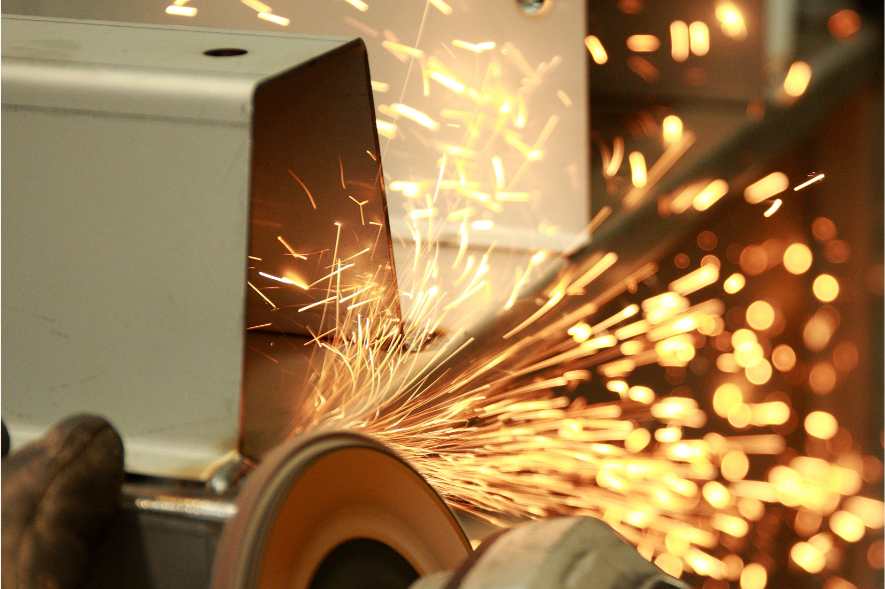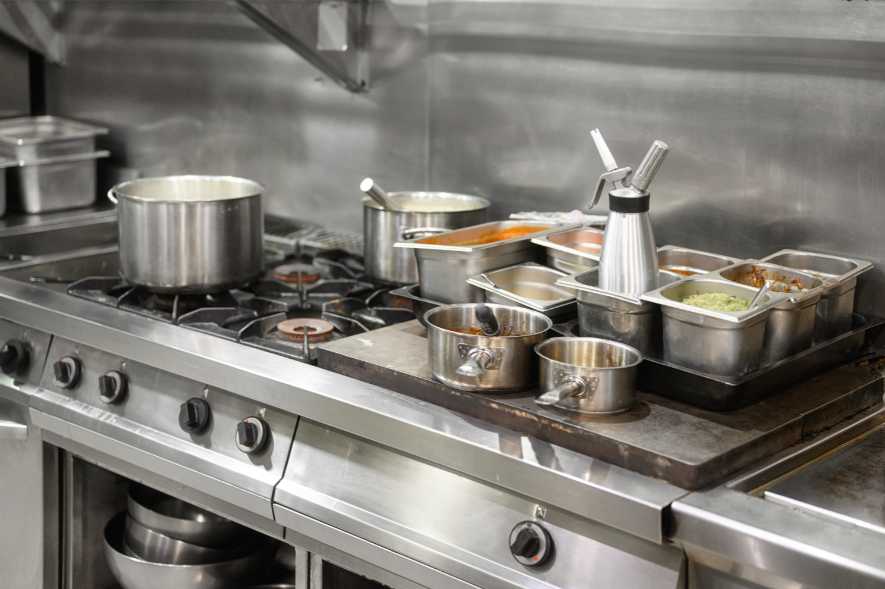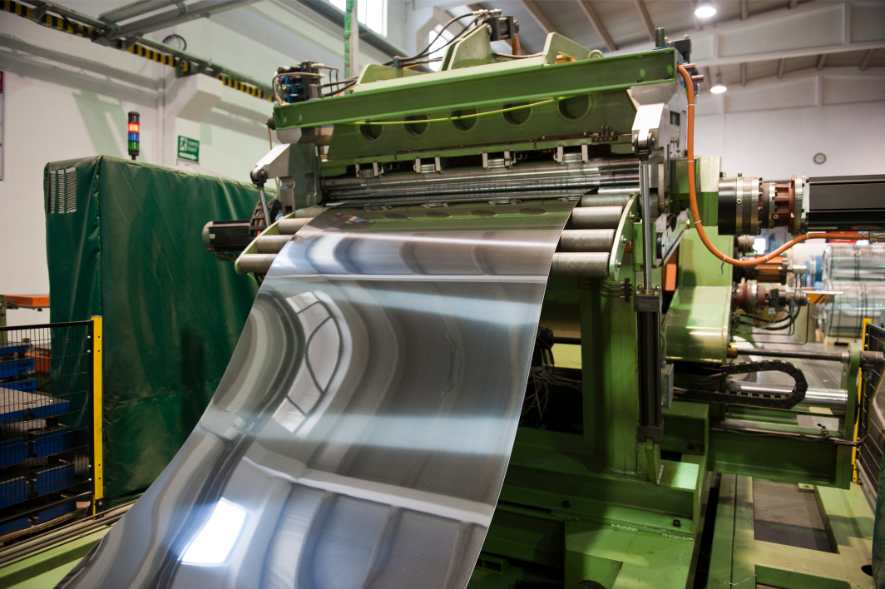The Future of Design: Stainless Steel Fabrication Revolutionising Industries

In a world where technology is rapidly advancing, the future of design is being revolutionised by stainless steel fabrication.
This versatile material is not only durable and aesthetically pleasing, but it also boasts a range of properties that make it perfect for a wide array of industries.
From architecture to automotive, stainless steel fabrication is transforming the way we think about design. With its ability to withstand extreme temperatures, resist corrosion, and provide unparalleled strength, stainless steel is becoming the go-to choice for innovative solutions.
The possibilities are endless – from sleek, modern structures that push the boundaries of architecture to cutting-edge automotive components that enhance performance and safety.
As the demand for sustainable and long-lasting materials continues to rise, stainless steel fabrication is poised to take centre stage in the design world.
Join us as we explore the exciting future that awaits us, where stainless steel shapes our world and pushes the boundaries of what is possible.
The importance of stainless steel in various industries
Stainless steel is a vital material in numerous industries due to its exceptional properties and versatility. Its corrosion resistance makes it ideal for applications in sectors such as architecture, aerospace, medical, and food processing.
The ability of stainless steel to withstand extreme temperatures and harsh environments enables it to be used in infrastructure projects, automotive manufacturing, chemical processing, and more.
Additionally, its aesthetic appeal and durability make it a popular choice for consumer products like kitchen appliances, jewellery, and furniture. The versatility of stainless steel fabrication has made it an invaluable resource across various sectors, providing solutions that are both visually appealing and highly functional.

Stainless steel fabrication’s impact on the architecture industry cannot be overstated.
Its strength, durability, and corrosion resistance allow for the creation of iconic structures that stand the test of time. From soaring skyscrapers to intricate bridges, stainless steel has become synonymous with modern design.
The material’s ability to be shaped into complex forms and its reflective surface add a touch of elegance to any architectural masterpiece. Moreover, stainless steel’s low maintenance requirements and long lifespan make it a cost-effective choice for both commercial and residential projects.
As architects continue to push the boundaries of what is possible, stainless steel fabrication will play a crucial role in shaping the future of architectural design.
Read more about the use of stainless steel to create beautiful balustrades for both commercial and residential projects.
Advantages of stainless steel
Stainless steel fabrication offers numerous advantages that make it a preferred choice in various industries. One of its key benefits is its corrosion resistance.
Stainless steel contains chromium, which forms a thin, invisible layer on its surface that protects it from rust and corrosion. This property makes stainless steel ideal for applications in environments with high moisture, chemicals, or extreme temperatures.
The durability of stainless steel allows for long-term use without significant degradation, reducing maintenance costs and extending the lifespan of products and structures.
Another advantage of stainless steel fabrication is its high strength-to-weight ratio.
Stainless steel is incredibly strong, allowing for the creation of lightweight yet sturdy components.
This strength is particularly crucial in industries such as automotive and aerospace, where weight reduction is essential for fuel efficiency and performance. Stainless steel’s strength also ensures the safety and reliability of structures and equipment, making it an indispensable material for critical applications.
Furthermore, stainless steel’s aesthetic appeal and versatility contribute to its popularity. The material can be polished, brushed, or textured to achieve various finishes, catering to different design preferences. Its reflective surface adds a touch of sophistication to architectural projects, while its sleek appearance enhances the visual appeal of consumer products.
Stainless steel’s versatility extends to its ability to be easily formed into complex shapes, allowing designers to create innovative and unique solutions.
Read more about the benefits of stainless steel in a recent post.
Emerging trends in stainless steel fabrication
As technology advances, new trends are emerging in stainless steel fabrication that further enhances its capabilities and applications. One such trend is the use of automation and robotics in the fabrication process.
Automation allows for precise and efficient manufacturing, reducing human error and increasing productivity. Robots equipped with advanced sensors and algorithms can perform intricate welding, cutting, and bending operations, resulting in high-quality products and faster production cycles. The integration of automation and robotics in stainless steel fabrication enables manufacturers to meet increasing demands while maintaining consistent quality.

Another emerging trend is the integration of additive manufacturing, commonly known as 3D printing, in stainless steel fabrication.
3D printing opens up a world of possibilities in design and customisation. With this technology, intricate and complex stainless steel components can be produced with greater speed and precision.
The ability to create intricate geometries not feasible with traditional manufacturing methods allows for the development of lightweight, high-performance structures. Additive manufacturing also reduces material waste, making it a more sustainable option for stainless steel fabrication.
Which sectors rely on stainless steel?
Stainless steel fabrication finds applications in a wide range of sectors, each benefiting from its unique properties.
In the automotive industry, stainless steel is used for engine components, exhaust systems, and structural parts. Its corrosion resistance, high strength, and heat resistance make it an ideal choice for parts that are exposed to extreme conditions. Stainless steel’s durability also ensures the longevity of automotive components, reducing the need for frequent replacements.
In the medical field, stainless steel fabrication plays a critical role in the production of surgical instruments, implants, and medical equipment. The material’s biocompatibility, corrosion resistance, and ease of sterilisation make it suitable for use in healthcare settings. Stainless steel’s strength and durability allow for the creation of reliable and long-lasting medical devices, contributing to patient safety and well-being.
The food processing industry relies heavily on stainless steel fabrication for its sanitary properties and corrosion resistance. Stainless steel equipment and machinery prevent contamination, ensuring the safety and quality of food products. Its non-porous surface makes it easy to clean and maintain, meeting strict hygiene standards. Stainless steel’s resistance to chemicals and extreme temperatures makes it suitable for various food processing applications, from storage tanks to conveyor systems.
Innovations in stainless steel fabrication techniques
Innovations in stainless steel fabrication techniques have further expanded the possibilities of design and manufacturing. One such innovation is laser cutting, which allows for precise and intricate cuts on stainless steel sheets. Laser cutting provides clean edges and reduces the risk of material deformation, enabling the fabrication of complex shapes with minimal waste. The accuracy and speed of laser cutting make it a cost-effective solution for both small-scale and large-scale production.
Another innovative technique is hydroforming, which involves shaping stainless steel using pressurised fluid. Hydroforming allows for the creation of seamless and complex forms that would be challenging to achieve with traditional methods. The process eliminates the need for multiple parts and welding, resulting in stronger and more aesthetically pleasing products. Hydroformed stainless steel components find applications in industries such as automotive, aerospace, and architecture.
Sustainability and environmental impact of stainless steel
In an era of increasing environmental consciousness, sustainability is a crucial consideration in design and manufacturing.
Stainless steel fabrication aligns well with sustainability goals due to its long lifespan, recyclability, and energy efficiency. Stainless steel products can be recycled without losing their properties, reducing the demand for virgin materials, and minimising waste. The recycled content of stainless steel is typically high, further reducing its environmental impact.
Stainless steel’s durability and resistance to corrosion contribute to its energy efficiency. Products made from stainless steel require less maintenance and replacement, resulting in lower energy consumption throughout their lifecycle. The material’s ability to withstand extreme temperatures also contributes to energy efficiency in applications such as HVAC systems, where stainless steel components help optimise energy usage.
Additionally, stainless steel’s hygienic properties make it suitable for applications in sectors such as healthcare and food processing, where cleanliness is crucial. Its non-porous surface prevents the accumulation of bacteria and contaminants, reducing the risk of infections and ensuring product safety. By choosing stainless steel, industries can contribute to a cleaner and healthier environment.
Challenges and limitations of stainless steel fabrication
While stainless steel fabrication offers numerous advantages, it is not without its challenges and limitations. One of the primary challenges is its high initial cost compared to other materials. Stainless steel’s superior properties and durability come at a higher price, making it less cost-effective for certain applications. However, its long lifespan and low maintenance requirements often offset the initial investment in the long run.
Another limitation is the difficulty in welding stainless steel. Due to its high thermal conductivity and low thermal expansion coefficient, stainless steel requires precise welding techniques to avoid distortion and material damage. The selection of appropriate welding processes and consumables is crucial to ensure strong and reliable welds. Skilled welders with expertise in stainless steel fabrication are essential to overcome this challenge.
Stainless steel’s strength and durability can also present challenges in terms of machining. The material’s hardness makes it more challenging to cut, resulting in increased tool wear and slower machining speeds. However, advancements in tooling technologies and machining techniques have mitigated these challenges, allowing for efficient stainless steel fabrication.
The future of stainless steel fabrication
The future of stainless steel fabrication looks promising as the demand for sustainable and long-lasting materials continues to rise. Advancements in technology and manufacturing processes will further enhance the capabilities and applications of stainless steel. The integration of automation and robotics will increase productivity and precision, enabling faster and more cost-effective fabrication.
Additionally, the use of additive manufacturing in stainless steel fabrication will revolutionise design possibilities. The ability to create complex geometries and lightweight structures will open up new avenues for innovation in various industries. With 3D printing, customisation and rapid prototyping will become more accessible, allowing for faster product development cycles.
As sustainability becomes a top priority, stainless steel fabrication will play a vital role in creating environmentally friendly solutions. The material’s recyclability and energy efficiency will make it a preferred choice for industries aiming to reduce their environmental impact.
Furthermore, the versatility and aesthetic appeal of stainless steel will continue to drive its adoption in design. From architectural masterpieces to consumer products, stainless steel’s sleek and timeless appearance will remain in high demand.
In conclusion, stainless steel fabrication is revolutionising industries by pushing the boundaries of design. Its exceptional properties, including corrosion resistance, strength, and versatility, make it a preferred choice across various sectors.
Emerging trends in automation and additive manufacturing are further enhancing its capabilities. Stainless steel’s sustainability, durability, and aesthetic appeal position it as a material of the future.
As technology advances and sustainability becomes paramount, stainless steel fabrication will continue to shape our world and inspire innovative solutions.
The possibilities are limitless, and the future of design is brighter than ever with stainless steel at its core.
